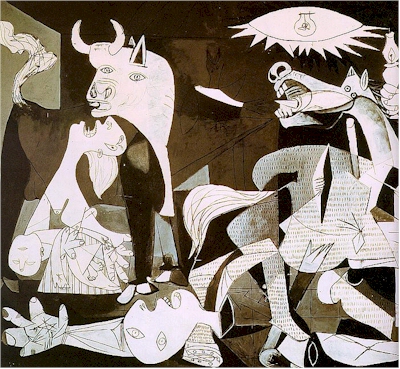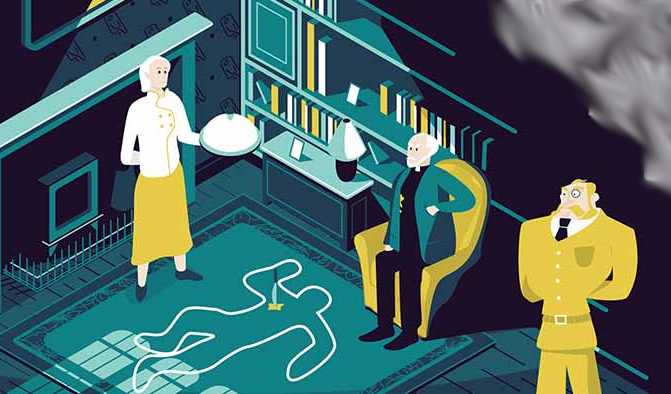Writing Your Novel
Fall 2025
8 Wednesdays 9-24-25 through 11-19-25
No class October 1, 2025
6:30 p.m.-8:45 p.m. Eastern
updated 10-22-25
Current Week's Session
Presenters Schedule
Grammar and formatting
Reading Assignments Due
Writing Assignments Due
Zoom etiquette & Class guidelines
Outline of Weekly Topics
NOTE: Each week's session can be viewed in final form @ noon of class day.
Class Description
The class begins with the importance of separating the process of writing a novel from the novel as a product to critique and edit. It covers the basic elements and vocabulary for talking about novels–things such as the uses of description, finding where you stand as you tell your story (a.k.a. Point of View), writing strong dialogue, pacing, building scenes, and working with the logistics of physical action and groups. The class spends time on issues like how to sustain interest for the writer as well as the reader; how to make a place in a life for writing a novel; what novels can do that film can't; whether you should outline; and if you do, when to do it; among many other topics. Class sessions include in-class writing exercises, mini-lectures, critique sessions, and discussions.
Each student may present up to 50 pages to the teacher for response. (Pages for class critique are included as part of the 50 pages the teacher will read).
Check this site frequently for changes. There will be links to readings and a plan of the session available each class day by noon.
Before that time, everything is in process.
Some things to read before class starts (not required)
We don't talk a lot about fine editing of sentences in a novel writing class, but you might take a look at Nina Schuyer's substack about beautiful sentences.
Article on the three kinds of publishers
Piece on writing the epistolary novel https://www.aliventures.com/epistolary-novel/
How not to use Too Many Tags and other symptoms of “creative dialogue syndrome:" https://www.autocrit.com/editing/library/avoid-creative-dialogue-tag-sydrome.
My old article in The Writer about how to start your novel that has useful ideas (IMHO!) on continuing and restarting a novel: https://meredithsuewillis.com/How%20to%20Start%20a%20Novel.pdf
Optional text for the class:
Ten Strategies to Write Your Novel by Meredith Sue Willis
(Available from all the usual online suspects including Bookshop.org.).
Writing Your Novel
September 24-November 19, 2025(No class October 1)
Wednesdays,
6:30 PM - 8:45 PM Online-Zoom
Instructor: Meredith Sue Willis
E-mail: MeredithSueWillis@gmail.com
Session 1
Wednesday 9-24-25
Sense Details/Description/Place
Writing Assignment Due Before the First Session: For the first session, please e-mail the instructor and members of the class a half-page summary or outline of the novel. If you are just beginning your book, do this as a first go at planning. It is a kind of hypothesis, almost certainly to be changed later.
Reading Assignments Due by the First Session:
Separating Process and Product. (Click on "Read an Excerpt," If you have the book, you can read the full version In Ten Strategies to Write Your Novel, "Strategy 1: Separate Process and Product.")
Optional readings:
Two chapters in Ten Strategies: "Strategy 1: Separate Process and Product: and "Strategy 2: Taste It, Touch It Smell It..." (Optional).
From This Year You Write Your Novel by Walter Mosley (Optional).
Do you need ideas for starting your novel? Check out MSW's article online from The Writer "How to Get a Novel Started." (Optional).
Story, Plot, and Character: Dennis Lehane's appreciation of Elmore Leonard (Optional).
General Business
This class welcomes beginning novelists, but is also aimed at writers who are well-underway on a novel and need further discussion and support/stimulation to continue or restart. Apologies to people who have taken the course before--there will be old material as well as new. We'll cover a lot of basics terminology and take a look at novel structure in general. If you feel you need more of the basic terminology and ideas, please see the teacher's book, Ten Strategies to Write Your Novel, as well as materials linked in the weekly session plans below
Note to those early in the process of novel writing or starting a new novel: you'll probably get most out of this class if you do the weekly assignments. They will give you several fragments that can become the scenic frame work of your novel. This is, of course, your call--how you should best move forward.
Note to returning students and others with a novel-in-progress: Use the the assignments if they work for you, or substitute passages from your project. I try to change up my assignments and readings, but there will definitely be repetitions. The objective is to move your book forward in whatever way works for you.
During the course, you may bring a total of up to 50 manuscript pages for critique from the teacher. Some of these pages will be for whole class critique, some only for the instructor. A page is comparable to a double spaced one sided sheet of paper with one inch margins all around and Times New Roman 12 pt. font. It is roughly 300 words.
You will also get feedback from members of the class when you turn in pages for critique.
Thus, it is important (and fair) to be prepared to discuss the work of classmates when they present in turn.
All writing and presentation selections should be from the novel you're working on. This is very important. It's the essential ground of how this course works.
This syllabus will be updated from occasionally to often here online, so please check this class web page at least once a week. Access to the website is also available from MSW's home page. Look at the top left Write Your Novel Fall 2025 just after the mast head.
Assignments go only to MSW. Anything you turn in to MSW, however, including the presentation pieces and homework, counts towards the total of 50 pages she will review during the class. You may turn in work weekly or less often, but please let MSW know your plan so she doesn't get swamped at the end!
Questions? Get in touch with MSW at meredithsuewillis@gmail.com.
Zoom & Class guidelines
- Please have your camera turned on.
-- Put yourself on mute when you're not talking so we don't have to hear your puppy, your partner, or your phone. The mute button is usually at the lower left of the Zoom screen.
-- Raise your physical hand if you want to speak.
-- Speak one at a time--in practice, this means waiting for the instructor to call on you.
-- Try to be succinct and don't repeat what has already been said.
-- Listen and respect each other's ideas. We are writing different kinds of novels, and if possible, try to make suggestions based on helping everyone write the best novel of the type they are writing.
-- Use the chat function for procedural notes to the instructor (you got a text from a classmate who can't get into the Zoom; the name of the book you couldn't think of and wanted to share--things like that.)
-- Apologies in advance: I may have to interrupt you or cut you off. I try for equal time for each person, but I also have an ambitious plan for what to cover.
-- Technical note for Mac Users on Zoom: To view screen share in Zoom at full screen, see the top drop down menu and set to "100%"
Grammar and formatting
Getting the right spacing between paragraphs in Word. Word's default spacing is block paragraphs, which make your paragraphs look like business letters. Narrative prose needs to flow. Use no extra space between paragraphs unless you have a time gap or if this is essential to your style. To show a new paragraph, indent!
Look over these conventional editorial marks. I often go over papers by hand and then snail mail or scan and e-mail the pages.
Here's a piece from The Guardian on adverbs
Check out Reedsy.com for free lessons and information on all kinds of things. They sell services, but their free things are usually quite good.
.
Outline of Weekly Topics
1. 9-24-25 Sense Details and Description to go deeper: Place, setting, context. Sense Details and Description for the writer's process
No Class 10-1-25
2. 10-8-25 : Using sense details to examine character: character from the outside, character from the inside.
3. 10-15-25 Dialogue and Scene: Dialogue is the heart of the scene; scenes are the building blocks of novels.
4. 10-22-25 Point of View and the Logistics of Group/Crowd scenes
5. 10-29-25 Structure at the macro level: When, If, and How to Outline. Alternatives to outlining.
6. 11-5-25 : Revision Techniques especially useful for novels
7. 11-12-25 Revision at the sentence level (editing).
8: 11-19-25 Making a plan to fit your novel in your life--and write it. What to do with your novel once you've finished?
There will be critique sessions at every class after the first one.
I. Business:
Is everyone getting e-mail?
Snail Mail addresses--Please e-mail them to me if I don't already have them.
Some of the business listed above--the 50 manuscript pages for critique from the teacher. Some of these pages will be for whole class critique, some only for the instructor. A page is comparable to a double spaced one sided sheet of paper with one inch margins all around and Times New Roman 12 pt. font. It is roughly 300 words.
You will also get feedback from members of the class when you turn in pages for critique. Thus, it is important (and fair) to be prepared to discuss the work of classmates when they present in turn. You should read the work, be ready to discuss, and write at least a short note of response.
All writing and presentation selections should be from the novel you're working on. This is very important. It's the essential ground of how this course works.
Structure of the Course: see topics above, but feel free to send me questions, things you'd like covered, etc.
Content/structure of course--pretty typical of these workshop-seminars:
homework writing
homework readings (we may not discuss, but they cover things I think you'd be interested in knowing.)
Mini-lectures in-class
critiques in-class
in-class writing
in-class discussionsCritique Sessions: see calendar below: pick a date in the first half; once everyone has a date, pick another.
You'll get at least two turns. @ 10 pp. (a page is always the standard double spaced 8x11 with one inch margins, font comparable to Times New Roman 12pt.
E-mail attached work, as a Word file or .pdf to whole class & teacher by Sunday night before your presentation so people have time to look at it. Earlier is better.
Everyone is expected to read these and be ready to talk. At least a short, holistic, written note to the writer is requested.
II. Questions about business?
III. Introduction to the novels we'll be talking about:
The summaries sent in-- a few comments from me, noting genre, etc. You'll get a chance to talk about them soon.
IV. Macro Writing:
TALKED ABOUT DIDN'T WRITE
these things about your novel (Macro)Give its genre, if you can.
Point of view?
How long the book will be in its final form.
What is its final form? (Do you imagine is as hardback, paperback, being read on a Kindle or other?)
Who is likely to read it? (Audience)
How much is already written?
Check out Types of Novels.
V. Go-round:
A few things about my novel-- from list, from summary, etc.
VI. Some terms we'll be using.
Process and Product
Macro and Micro.
Big issues like structure; but also revision and the importance of the concrete. In-betrween macro and micro comes the scene, which is the major building block of novels (as of film and theater).
Terms for Novel Writing that we'll use in this course. (Feel free to save or sprint any pages you want to use)
VII. Extremely Mini-Lecture on the Uses of Description
1. Everything is built with concrete observation and sense details.
Samples:
A mood setting horror sample: Cemetery Lovecraft
Murder mystery leisurely set up: Opening of A Noble Radiance
Fullblown poetic place: Blood Meridian short sample
From a short story--note no sense of sight here: Consultation small sample
2. Less and less patience among us all as readers today with elaborate description (but some people delight in reading and writing it!). However, there's another reason to write passages of description: it, IMHO, is essential for the novelist's process. A leisurely survey of the setting gives me a mental image of where it's taking place, where characters will stand. Also, by imagining the smells and sounds, the temperature and the way the character's shirt has begun to itch--I can sink in deeper, feel what is happening, and often get insights that will help with the story telling. What does the itchy fabric do? Does the character get irritable?
In general: over-write in early drafts for yourself.
A couple of points:
First: Concrete description using the senses whenever possible is the best way to communicate in words things we all understand, really, the lowest common denominator: red, warm, smooth, crisp, sweet, juicy. That is to say, sense details. It's not the only thing in writing, but it is essential for those of us writers (novelists and other fiction writers!) who aren't illustrating their work or depending on costume designers and actors to give the timbre of the voice, the fabric and folds of the cloak.
Second: Drafting lots of rich description will put you into your work more completely and clearly and may even give you ideas for new scenes, new characters, new depth! Over-write as you make your first draft.
Third: In your final product, cut most of the description you drafted. Make your descriptions as concise as possible, retaining only the very best details.
VIII. WRITING
This is a classic moment that could and probably does appear in almost any novel. A character is in a new place--a hotel room, an eating establishment in a foreign country, a prison cell, a cave, a cemetery, an enormous football stadium-- a scene that is or could be from your novel, of course.
Write this scene-- including as many senses as possible. Over-write if you can. Keep normal point of view of your nove.
Can you learn anything from what the point-of-view character observes? Is there something in the room that furthers the story (someone hiding in the hotel room's bathroom, for example) or an object or smell that jogs the pov character's memory.
IX. Share a couple
How was that? Share.
X. Break
XI. Assignments for next week.
Don't forget, you can always substitute!
Writing Assignment due 10-8-25:
Revise the in-class writing and submit: A character is in a new place--a hotel room, an eating establishment in a foreign country, a prison cell, a cave, a cemetery, an enormous football stadium-- something from your novel of course. Write this scene-- including as many senses as possible. Over-write if you can. Use the normal point of view, for example.
.Reading Assignments due 10-8-25:
1. Read the summary/outlines and first pages of your classmates' novels if you haven't already.
2. Read over today's session here on the class web page. Go to any links you (or we!) missed, and read over them, especially samples. Feel free to print out the materials.
3. Take a look at the weekly topics here and see if there is anything you want to be sure we cover.
4. Optional: In Ten Strategies, read pp 14-18 (on exploring character from the outside in) plus Strategy 3, "Exploring Character from the Inside Out."
XII. Things on your mind at this point? Questions, things you wanted to say and got cut off?
Linda: Authenticity, use of n-word, profanity--how to deal with 1989 with people today?
Betsy: To write dialogue that distinguishes one character from another. So they don't all sound alike.
Diana: Has been criticized for pacing?
Elizabeth: Concerned her novel is too heavy.
XIII. WRITE
Jot down (or type!) 3- 5 important scenes in your novel, especially ones you have not written yet.
With each scene, include
The place (setting)
What time of day? (what is the slant of the sun if outdoors? overcast? If indoors, is it fluorescent lights or big windows?)lighting like?
What is the weather?
XIV. Shared the above as a go-round--pretty good.
No Class 10-1-25
Session 2
Wednesday 10-8-25


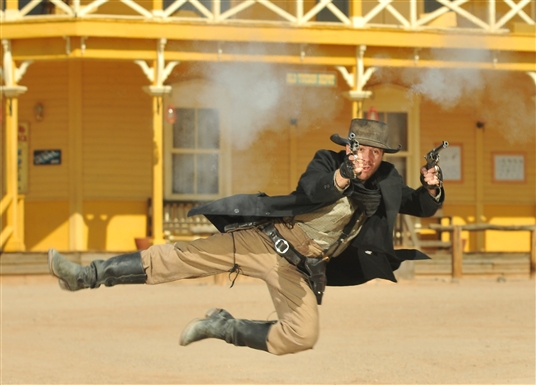
The Great Alan Rickman as the ineffably sleazy Mr. Slope; Brando as the godfather; action from a cowboy movie

Sense Details Explore & Develop Character;
Characters in action
I. Assignments due 10-8-25
Writing Assignments due 10-8-25:
Revise the in-class writing and submit: A character is in a new place--a hotel room, an eating establishment in a foreign country, a prison cell, a cave, a cemetery, an enormous football stadium-- something from your novel of course. Write this scene-- including as many senses as possible. Over-write if you can. Keep it as a part of your novel--the normal point of view, for example.
.Reading Assignments due 10-8-25:
1. Read the summary/outlines and first pages of your classmates' novels if you haven't already.
2. Read over the 9-24-25 session on the class web page. Go to any links you (or we!) missed, and read over them:
3. Take a look at the weekly topics here and see if there is anything you want to be sure we cover.
4. Optional: In Ten Strategies, read pp 14-18 (on exploring character from the outside in) plus Strategy 3, "Exploring Character from the Inside Out."
II. Business for 10-8-25
I think I wasn't clear about when homework is due: written homework assignments are due by midnight of class day. Earlier is fine,but I won't return them with notes until the next class day. Thus, the pieces that come in for today will be emailed back to you sometime on Wednesday, October 15, 2025.
Sunday night is the deadline for presenters' critique pieces, not homework.
This is a repetition: During the course, you may bring a total of up to 50 manuscript pages for critique by me. Some of these pages will be for whole class critique, some only for me. A page is comparable to a double spaced one sided sheet of paper with one inch margins all around and Times New Roman 12 pt. font. It is roughly 300 words.
All writing and presentation selections should be from the novel you're working on. This is very important. It's the essential ground of how this course works.
Please pick a second presentation date-- for openings, see Presenters' Schedule. If possible, avoid having three people on one day.
Other business? Questions?
Get in touch with MSW at meredithsuewillis@gmail.com.
Pet Peeves:
Lie versus Lay
– Today I lie in my bed; yesterday, I lay in my bed. In the past, I have lain in bed till noon.
– Tonight, I lay my pen beside my computer. Yesterday I laid my pen beside my computer.
– I lay the paintbrush on the table, and the paintbrush just lies there. But when I laid it down yesterday, it rolled off the table and lay on the floor.
Try to use paragraph form, not business block form. In Word, do this:https://www.meredithsuewillis.com/Spacing Between Paragraphs in Word.pdf . Also, please number your pages!
Contractions within quotation marks. Most of us in common conversation say "I'll," "I'd," "She's," etc. Sometimes a very formal person or an English language learner will say, "I will see you tomorrow," or "She is accompanying me..." Or, for emphasis, we say,"I will see him tomroow."
III. Mini Lecture: Character from the outside, logistics in description.
1. Let me start this mini lecture with a simple passage of description that focuses on the senses of touch and sound. It's a twentieth century story in which the sense details are not merely to identify or make the reader "see," but a way for us to feel what the little girl feels.
Sample from a story called "Alice" by Paulette Childress White.
2. The second one is a classic from nineteenth century lit, following a common, comic pattern:
Mr Slope, a Clergyman By Anthony Trollope in Barchester Towers
Mr Slope is tall and not ill-made. His feet and hands are large, as has ever been the case with all his family, but he has a broad chest and wide shoulders to carry off these excrescences, and on the whole his figure is good.
His countenance, however, is not specially prepossessing. His hair is lank and of a dull pale reddish hue. It is always formed into three straight, lumpy masses, each brushed with admirable precision and cemented with much grease; two of them adhere closely to the sides of his face, and the other lies at right angles above them. He wears no whiskers and is always punctiliously shaven. His face is nearly of the same colour as his hair, though perhaps a little redder: it is not unlike beef– beef, however, one would say, of a bad quality.
His forehead is capacious and high, but square and heavy and unpleasantly shining. His mouth is large though his lips are thin and bloodless, and his big, prominent, pale-brown eyes inspire anything but confidence. His nose, however, is his redeeming feature: it is pronounced, straight and well-formed; though I myself should have liked it better did it not possess a somewhat spongy, porous appearance, as though it had been cleverly formed out of a red-colored cork.
I never could endure to shake hands with Mr Slope. A cold clammy perspiration always exudes from him, the small drops are ever to be seen standing on his brow, and his friendly grasp is unpleasant.
This is about using the senses again-- visual is natural to us, but you learn more perhaps from the other senses. As with place, the idea is to use description for your own exploration of your characters (character development).
Again, I recommend over-writing (which they routinely did in the 19th cenury--and people thrives on it!-- for the usual reasons we know: more time, fewer alternative ways of getting entertainment, pay by the words, etc.)
3. Now let's go micro, revising. I've said the point is to over write, use your senses, especially the intimate ones. Here is a piece, not especially well written, but to make a point about where in your revising you should put the sense details you've accumulated (this is mostly visual):
Description: Where to put it: The Lady Sheriff
IV. Write
Think of a character in your novel (I'm thinking of Jackie's mean girl Hannah or the sister in the bus in Diana's passage).
Over write a description of that character, from the point of view you're using in your novel, but lots of details, following this pattern: go from the most distant sense (vision) with details of size, shape, clothing, etc. to the character's voice or other sounds (rustling clothes? Music leaking from ear buds?) to the more intimate details like touch (from a hand shake? or just description focused on texture) and smell! Taste only if you get a great way to work it in.
V. Share
VI. First Presenter: Diana Jones
VII. Brief discussion of how we evaluate VERSUS how we respond to other fiction.
What kind of feedback do you find most useful? How do we evaluate fiction? What kind of feedback do you find most useful? If you'd like, print out and use points for novel critiquing.pdf You can use this to give to people, as a guide, or not at all. You might also prepare your own form.
As a teacher, this is my rule of thumb: How can I help this novel become the best novel of its kind?
Several important ways to respond:
-
Writer should ask for what they want: specific kinds of critique? (A note on your presentation piece is very helpful).
-
Reader might start with What do I want to know more about?
-
Separate line editing from conceptual editing
-
Offer any expertise you have--if you've worked as a volunteer EMT and someone has a scene with an emergency car, tell them if you think they got something factually wrong, or give a detail they might use.
Here's a printable list about some things to consider in evaluating fiction
Here are some possible practical ways to make your responses:
Write a holistic note and email.
Use "comments" in Word.
Scan in your hand-written comments and email.
Send by snail mail--no one seems to be doing this, but you can offer/ask.
Other ideas?
VIII. Break
IX. Presenter Two: Jackie Celio
X. Started Go--Round on Process/How my novel is going
Did Betsy & Diana
XI. Assignments for next week.
Don't forget, you can always substitute!
Writing Assignment due 10-15-25:Finish the physical description of a minor character using more senses that just visual. If it leads you to a scene, write on! If you can, break up the description, and get rid of everything but the best parts.
Reading Assignments due 10-15:
1. Read, write a response, and be ready to discuss the presentation pieces for 10-15-25
2. Read anything in Session II (10-8-25) that the class didn't get to, or you missed.
A Fist Fight from an old Louis L'Amour Novel
3. For fun: I can think of counter-examples of a lot of this, but it's still worth looking at:
Common errors made by fiction writers;
A short piece (by MSW) on elaborate language and precision
Using coincidence in fiction the right way.
4. Read these on scene and dialogue, which will be the theme/topic for Session III 10-15-25:
What is Scene? Why is it important?
Dialogue Tags
MSW's article on Dialogue
Optional: In Ten Strategies,read "Strategy Five: Master Dialogue and Scene."
Session 3
Wednesday 10-15-25
Dialogue and Scene
Scene from movie Pulp Fiction with Samuel L. Jackson and John Travolta-- the interplay and dialogue
between their characters was central to the movie.
I. Assignments for this week.
Writing Assignment due 10-15-25:
Finish the physical description of a minor character using more senses that just visual. If it leads you to a scene, write on! If you can, break up the description, and get rid of everything but the best parts.
OR,
Write a Large motor physical action into your novel.
Reading Assignments due 10-15:
1. Read, write a response, and be ready to discuss the presentation pieces for 10-15-25
2. Read anything in Session II (10-8-25) that the class didn't get to, or you missed.
A Fist Fight from an old Louis L'Amour Novel
3. For fun: I can think of counter-examples of a lot of this, but it's still worth looking at:
Common errors made by fiction writers;
A short piece (by MSW) on elaborate language and precision
Using coincidence in fiction the right way.
4. Read these on scene and dialogue, which will be the theme/topic for Session III 10-15-25:
What is Scene? Why is it important?
Dialogue Tags
MSW's article on Dialogue
Optional: In Ten Strategies,read "Strategy Five: Master Dialogue and Scene."
II. Business
-- Second Presentation: Jackie, Elizabeth? for openings, see Presenters' Schedule. If possible, avoid having three people on one day.
-- Questions? Clear about when homework is due, when it will be returned?
-- If you aren't doing the assignments, but substituting, please let me know your plan. Benjamin, for example is sending ten pages at a time, until he reaches the 50 page limit.
-- Get in touch with MSW at meredithsuewillis@gmail.com.
III. My novel, my Process of writing
(Betsy and Diana last week; Philip, Benjamin, Elizabeth, Linda, me this week.)
IV. Continued from last week:
Mini Lecture on Physical/Large Motor Action and Small Motor Action:
This is part of physical description, but it's action, which a couple of you asked about (how is my action writing?) One thing to face up to: Film almost always does better at presenting movement (it's the movies, duh). However, action is also essential in prose writing, and it is part of seeing a character from the outside.
There are two important elements:
ONE: Writing clear action so the reader can see it, or enough of it to understand what is going on.
TWO: What else is going on during action. Is the protagonist thinking? Is the setting or maybe the weather playing into what happens?
Writers who are naturals at dialogue and brilliant at structure and metaphor often have difficulties when their characters need to make a sandwich or kiss their lovers or strike out in a softball game. People write physical action in many ways, but the default is to describe it cleanly and smoothly, so that a reader can visualize what's happening and not have to get into trying to figure out whose fists smashed whose nose.
In general, physical action-- whether making tortillas or running for a bus or slashing with a knife, whether about making love or committing a murder-- works best when it is simple and sharp-- if what you want to do is convey what happens. The fewer words the better. Obviously this is a rule that has been broken often and to good effect, but start by trying to transfer what you see in your mind simply and clearly to the reader's mind.
"The Silver Screen" for Drafting action. One excellent technique to help you do this is to close your eyes and actually visualize a movie or TV screen. Watch your characters do their actions on the screen, and then write what you saw. Keep in mind that once again we are talking about revision, not drafting: I don't care how bad your description of action is in your first draft. Get it down first, then make it better.
Here, if you haven't read them, are three novel samples of action. One is old fashioned twentieth century action writing from an old cowboy genre novel. It feels long and loose now, but Louis L'Amour was extremely popular in his day (mid twentieth century).
Next, Lee Child is a slightly more current popular thriller/action writer. This passage exploits some readers' interest in guns and shooting, and has, I believe been used in a film..
The last one is from a literary novel, and it uses action (dance) to explore the main character's feelings about herself, the other people, her relationship to dance.
He Goes She Goes (This includes physical action and gesture. It includes description of people, description through detail and through imagery. Logistics, metaphor. Very full and novelistic. Note structure: Sets up with description, expands with metaphor, then the narrator's feeling. Also note the narrator's voice).
Finally, here's another small action writing which was transferred almost gesture by gesture to film.
The Don, still sitting at Hagen’s desk, inclined his body toward the undertaker. Bonasera hesitated then bent down and put his lips so close to the Don’s hairy ear that they touched. Don Corleone listened like a priest in the confessional, gazing away into the distance, passive, remote. They stayed for a long moment until Bonasera finished whispering and straightened to his full height. The Don looked gravely at Bonasera. Bonasera, his face flushed, returned his gaze unflinchingly.
-- Mario Puzo, The Godfather, p. 30

V. Presenter One: Benjamin
VI. WRITE
A scene in your novel when a physical action is very important. (a potential lover's touch; someone observes a theft; the point of view character steals something; hands make tortillas; etc.) Use the "Silver screen" technique to break it down into sharp, clear parts.
Then go back and add some of the main character's interior material: mood or reactions to the action--whether the main character is observing or participating in it.
Do you need to go back yet again and add some weather, furniture, other mise-en-scène?
(Mise-en-scène is what you see in a scene in a film, the "stuff"--whatever is seen by the camera: composition, sets, props, actors, costumes, and lighting. Expresses sense of space and time, maybe mood, maybe character's state ate of mind.)
VII. Break
VIII. Presenter Two: Elizabeth
IX. Dialogue & Scene Mini-lecture
A. Dialogue is where it all happens.
• Dialogue creates the illusion of the real world--closer to the thing it imitates (people talking) than any other element of fiction.
• Read dialogue aloud, it takes something close to the same period of time as if the conversation were happening in real life
• Even so, the observation of details comes to us in real life in an instantaneous glance, but dialogue is made of words on paper.
• A physical action like a sword thrust in real life (or even in film or on video) is a very different matter from a sword thrust described in words.
• This also accounts for some of the difficulties of writing dialogue: amateur novelists tend to think that if they can simply transcribe the way people talk, they are writing good dialogue. In fact, of course, realistic dialogue in a novel is an illusion
• Getting down all the words the people say is a good technique for drafting, but the best dialogue in novels is usually shorter, tighter, and more dramatic. A transcript of a conversation (think of a court proceeding) is tedious to read. It lacks the cues for how things are said, tone and gesture. It certainly lacks interior monologue, but also lacks what is called the gesture line, the actions that make it easy for a reader to visualize.
• A transcribed "real" dialogue also has too many words. There are phatic statements, fillers, grunts, and coughs. We tolerate many more words when we speak and listen than when we read. Novels intensify and sharpen conversation and heighten the intensity of the words. Even if the conversation is meant to show how inarticulate the speakers are, their inarticulateness is going to be more sharply demonstrated than in real life.
B: Some Issues with Dialogue.
A sample from one of my stories with (a) correct (I think!) dialogue punctuation and (b) a dialogue meant to sound natural, but almost certainly with fewer words than the people would have used in real life: The Two Lindas
Dialogue Tags
Grammar in fiction: watch out for too formal, especially within quotation marks.
Use of foreign languages:
"Our gallery was located on the ground floor and we had floor to ceiling windows which gave him 'a portal to eager woman.' His German words, not mine."
Is it German language? Or German grammar? Does it matter? So how do you show foreign languages and accents in your novel?
Here's a page of ways of putting Spanish into a scene.
C. Scene: The Building Block of Story (in theater, film, and certainly novels)
Continuing the Samuel L. Jackson Filmography:
the film from John Grisham's novel A Time to Kill, a court room scene
What is Scene? Why is it important? Read this.
Example of a brief full scene centered on dialogue.
Yonnondio This little scene is from a novel about the Depression in the 1930's in the U.S. This is, pedagogically speaking, about what all goes into a dialogue (and makes it a scene). (Image at right is Tillie Olsen, author of Yonnondio).
X. (If time) WRITE
List the 3-5 most crucial scenes in your novel.
Have you drafted them yet?
XI. Homework for 10-22-25
Assignments for next week.
Writing Assignment due 10-22-25:
(Don't forget, you can always substitute! )
A full scene from your novel when a physical action is very important. (a potential lover's touch; someone observes a theft; the point of view character steals something; hands make tortillas; etc.)
Try doing this writing in stages. First, use the "Silver screen" technique to break it down into sharp, clear parts if you want to. Go back and add more--what's going on with the main character's mood or reactions to the action--whether the main character is observing or participating in it. Also, go back yet again and add some weather, furniture, other mise-en-scène?
OR
Draft a crucial scene you haven't got to yet.
Reading Assignments due 10-22:
1. Read, write a response, and be ready to discuss the presentation pieces for 10-15-25
2. Skim over today's web page and read any of the linked pages you missed.
3. Read Point of View in all fiction. and article on various third person points of view
4. (Optional) In Ten Strategies, "Strategy 4: Find Where You Stand as You Tell Your Story."
Session 4
Wednesday 10-22-25
Point of View and Crowd Control
Crowd scenes: illustration of a ball from War and Peace; strike scene of a movie of Zola's Germinal.
I.
Writing Assignment due 10-22-25:
(Don't forget, you can always substitute! )
A full scene from your novel when a physical action is very important. (a potential lover's touch; someone observes a theft; the point of view character steals something; hands make tortillas; etc.)
Try doing this writing in stages. First, use the "Silver screen" technique to break it down into sharp, clear parts if you want to. Go back and add more--what's going on with the main character's mood or reactions to the action--whether the main character is observing or participating in it. Also, go back yet again and add some weather, furniture, other mise-en-scène?
OR
Draft a crucial scene you haven't got to yet.
Reading Assignments due 10-22:
1. Read, write a response, and be ready to discuss the presentation pieces for 10-22-25
2. Skim over last week's web page and read any of the linked pages you missed.
3. Crowd scenes:
A demonstration ;
Another demonstration;
A strike,
A Dinner Party and a Tea.
4. Read Point of View in all fiction. and article on various third person points of view
4. (Optional) In Ten Strategies, "Strategy 4: Find Where You Stand as You Tell Your Story."
II. Business
1. How many people would like to have an opportunity for a third presentation? People doing their first and second get precedence (10 pp). but if you'd like @ 5 pages (no more) we can another turn. One good option would be to present your opening pages, polished up. Another option would be a single scene, but no more than five pages.
2. How are you doing on turning in pages to me? Are you keeping a record? I'd like to begin to get some of the extra pages soon.3. Department of MSW pet peeves--word usage, I especially hate losing a special usage, especially with a word that sounds like what it stands for. Thus, I get peeved when someone has a boyfriend give an affectionate little smile and calls it a smirk.
Smirk-- Smirk is to smile in an irritatingly smug, conceited, silly or evil way. It's usually not a boyfriend, unless he's about to get into a fight. It's usually someone unpleasant or even evil.
4. Other business?
III. Presenter One: Betsy Friedman #1
IV. A Mini Lecture on Group and Crowd Logistics
Action writing is the close-up, with details of the human body in motion. Logistics is about movement too, but it is the movement of groups and large groups of people or things, or about people moving through space. The multiplicity of moving parts makes this difficult to get right. Movies, of course, are great at this: they can do a long shot that all at once gives us time, place, setting, and a sense of what is happening to one or more characters. You can imagine a crowd scene with the Silver Screen technique, or you can focus on one character and what they are experiencing with their senses and their limited view.
Some Samples:
1. Here is a bit of classic newspaper reporting from 1937:
The whole town of 7000 inhabitants plus 3000 refugees was slowly and systematically pounded to pieces. Over a radius of five miles round a detail of the raiders' technique was to bomb separate “caserios” or farmhouses. In the night these burned like little candles in the hills.... Next came fighting machines which swooped low to machine-gun those who ran in panic from dugouts, some of which had already been penetrated by 1000 lb. bombs, which make a hole 25 ft. deep. Many of these people were killed as they ran....
– George Lowther about events of April 16, 1937 (inspiration for Picasso's great painting, Guernica). Published in The Times of London and The New York Times.
This newspaper account attempts to describe something that was new at the time: air attacks on civilians. It is about an event that Picasso made famous in his monumental painting Guernica. It isn't fiction, so there's no protagonist, except the town itself. We are given an omniscient view of events, an attempt to create events in the mind of readers in the most direct and vivid way possible.
2. A Party With Food Being Passed From Joyce's novella
"The Dead."
3. This is from one of my novels set in 1968. Even though the event described is political, the focus is on one person's experience of being in a huge crowd-- sounds, physical pressure, being charged by mounted police. It's an attempt to capture the sensations of being part of this kind of event.
A demonstration
Some Tricks for crowd scenes:
Here are a couple of practical ways of dealing with logistics and large groups. I probably shouldn't talk about tricks-- all prose narrative, after all, is an illusion of reality-- but as you revise, you can try these things to make the story telling run more smoothly:
• Give individual actions and speeches only to two or three individuals in a scene. Say "The twenty two the Ridgewood Bobcats players walked into the dressing room with long faces," and then give quoted speeches only to Rob, Andre, and Coach. The other Bobcats can mutter as a group, or lower their heads in shame, but they remain a mass, part of the scene setting.
• Only give proper names to the most important characters in a group scene. (As above. Be sure you really need the names. Proper names call attention to themselves.)
• Clarify the logistics and physical action by giving a firm point of view. Imagine a fixed camera or a character in a chair in the northeast corner next to to the white board. Write only what is seen from that point of view. This will help keep the reader oriented. If that point of view or fixed camera angle is blocked by a pillar, don't tell what can't be seen. Even if you have a multiple viewpoint story, write your action from one point of view.
• Conflate. If you are writing fiction based on you own real family, for example, conflate two annoying little brothers into one. It strays from the facts, but allows the creation of one full character and eases your logistical problems.
V. Write
A scene in your novel with at least five people. They may all have speaking parts, or they may be background-- people in a sports bar getting excited about the big game on the screen; a buttoned up board meeting with lots of subtexts with people around a conference table; a family at dinner (or an extended family at a holiday meal); a really big crowd in public.
Have your main character, or one of your main characters, be interacting with others or even addressing the group or crowd, or interacting with various people. The objective is to make the crowd seem alive and the movement real, even if not realistic.
VI. Share
VII. Break
VIII. Presenter Two: Elizabeth Howell #2
IX. Brief Discussion on Point of View.
IMPORTANT: Point of view is essential, but if whatever you are doing works, just keep doing it.
-- Quick go-found: What p.o.v. is your novel?
Do you have a favorite point of view? Do you always use the same?
Why do you think people switch in the middle of a novel?
X. Point of View Mini-lecture
Point of View Chart
Point of View Samples
Here is one of my favorite examples of what I consider an awkwardly done Point of view (but you'll find this in published fiction all over the place). To me, this looks very amateurish.
Point of View: The Kilted Warrior
Here are a few samples of potential problems with point of view.
Point of View Problems
Keep in mind that you an also go closer and farther within a single point of view (sometimes narrate from a distance, setting up weather and place and perhaps time). You can also have a first person or close third that is the main character at 40 or 50 remembering what it was like at 16 and 20.
One thing to think about is the implicit or explicit illusion of how your story is being told--This is once again something most important in revising, not drafting!
The Illusion of How the Story is Told
XI. Write
These things about my novel:
1. What is the point of view?
2. What is the illusion of how my story is told?
3. Who am I the author talking to? That is, what is my audience?
4. How do I imagine them reading my novel? (in a hard cover book? on an airplane on their Ipad? Their Kindle?
5. How long is the novel?
6. Where is it shelved in the bookstore? (category)
XII. Homework for 10-29-25
Writing Assignment due 10-29-25:
(Don't forget, you can always substitute! )
A scene in your novel with at least five people. They may all have speaking parts, or they may be background: people in a sports bar getting excited about the big game on the screen; it might be a board meeting around a table or a family at dinner (or an extended family at a holiday meal); it might be a really big crowd in public.
Have your main character, or one of your main characters, be interacting with others or even addressing the group or crowd, or interacting with various people. The objective is to make the crowd seem alive and the movement real, even if not realistic.
Reading & Thinking Assignments due 10-29-25:
1.Read, write a response, and be ready to discuss the presentation pieces for 10-29-25
2. Skim over last week's web page and read any of the linked pages you missed.
3. Think about the large structure of your novel. If you have a draft, skim over (or make) a rough outline. Do you have a real climax or turning point? What parts get the most pages? If you are just beginning, make a rough (very rough!) summary or three sentence outline of the events. Come up with a hypothetical ending.
4. Read these pages from Ten Strategies on when to Outline:
Outlining: when to do it?
5. (Optional) In Ten Strategies, "Strategy 7: Structure Your Novel--Story, Plot, and Architectonics."
Session 5
Wednesday 10-29-25
Macro Structure:
When, If, and How to OutlineBelow this line, everything is
Homework for 10-29-25
Free book on ending your novel: way too prescriptive for my taste-- but possibly useful as a revision tool. Worth skimming, anyhow--and it's free!
Writing Assignment due 10-29-25:
(Don't forget, you can always substitute! )
A scene in your novel with at least five people. They may all have speaking parts, or they may be background: people in a sports bar getting excited about the big game on the screen; it might be a board meeting around a table or a family at dinner (or an extended family at a holiday meal); it might be a really big crowd in public.
Have your main character, or one of your main characters, be interacting with others or even addressing the group or crowd, or interacting with various people. The objective is to make the crowd seem alive and the movement real, even if not realistic.
Reading & Thinking Assignments due 10-29-25:
1.Read, write a response, and be ready to discuss the presentation pieces for 10-29-25
2. Skim over last week's web page and read any of the linked pages you missed.
3. Think about the large structure of your novel. If you have a draft, skim over (or make) a rough outline. Do you have a real climax or turning point? What parts get the most pages? If you are just beginning, make a rough (very rough!) summary or three sentence outline of the events. Come up with a hypothetical ending.
4. Read these pages from Ten Strategies on when to Outline:
Outlining: when to do it?
5. (Optional) In Ten Strategies, "Strategy 7: Structure Your Novel--Story, Plot, and Architectonics."
Kilted Warrior
Session 6
Wednesday 11-5-25
Revision Techniques for Novels
Session 7
Wednesday 11-12-25
Revision at the Sentence Level (editing)
Session 8
Wednesday 11-19-15
What do you do with your novel
once you've finished writing it?
Thinking about how to makes space, plan your writing life
Article on the three kinds of publishers
Why a manuscript gets rejected--emphasis on the query letter and opening pages.
Schedule of Presenters
No Class 10-1-25
Session 2: Wednesday, 10-8-25
Presenter 1: Jackie Celio #1
Presenter 2: Diana Jones #1
Session 3: Wednesday 10-15-25
Presenter 1: Benjamin Williams #1
Presenter 2: Elizabeth Howell #1
Session 4: Wednesday 10-22-25
Presenter 1: Betsy Friedman #1
Presenter 2: Elizabeth Howell #2
Session 5: Wednesday 10-29-25
Presenter 1: Linda Atlas #1
Presenter 2 Philip Ai #1
Presenter 3 (5 pp only):
Session 6: Wednesday 11-5-25
Presenter 1: Diana Jones #2
Presenter 2: Jackie Celio #2
Presenter 3 (5 pp only):
Presenter 4 (5 pp only):
Session 7: Wednesday 11-12-25
Presenter 1: Linda Atlas # 2
Presenter 2: Benjamin Williams #2
Presenter 3 (5 pp only):: Elizabeth Howell #3
Presenter 4 (5 pp only):
Session 8: Wednesday, 11-19-25
Presenter 1: Betsy Friedman #2
Presenter 2: Philip Ai #2
Presenter 3 (5 pp only):
Presenter 4 (5 pp only):
Subscribe to Meredith Sue Willis's Free Newsletter
for Readers and Writers:
Please fill in your e-mail address
to receive Books For Readers NewsletterE-mail address: Subscribe Unsubscribe
Send mail
News about Meredith Sue Willis Books by MSW Samples of MSW's Writing Upcoming with MSW Online Classes with MSW
Services MSW Provides Biography of MSW Resources for Writers Writing Exercises Journal of Practical WritingLOTS OF LINKS (MSW & More)
Books by Meredith Sue Willis Newsletter for Readers and Writers Contact MSW




Home

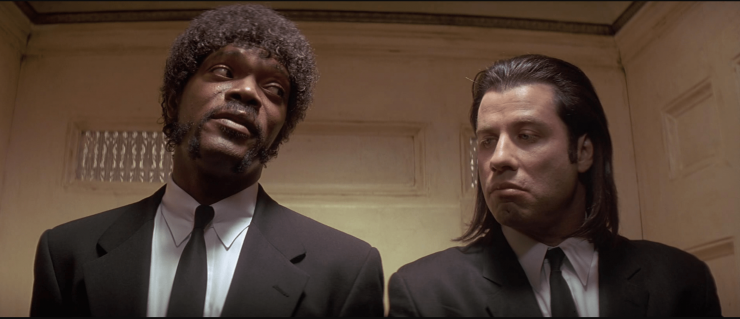
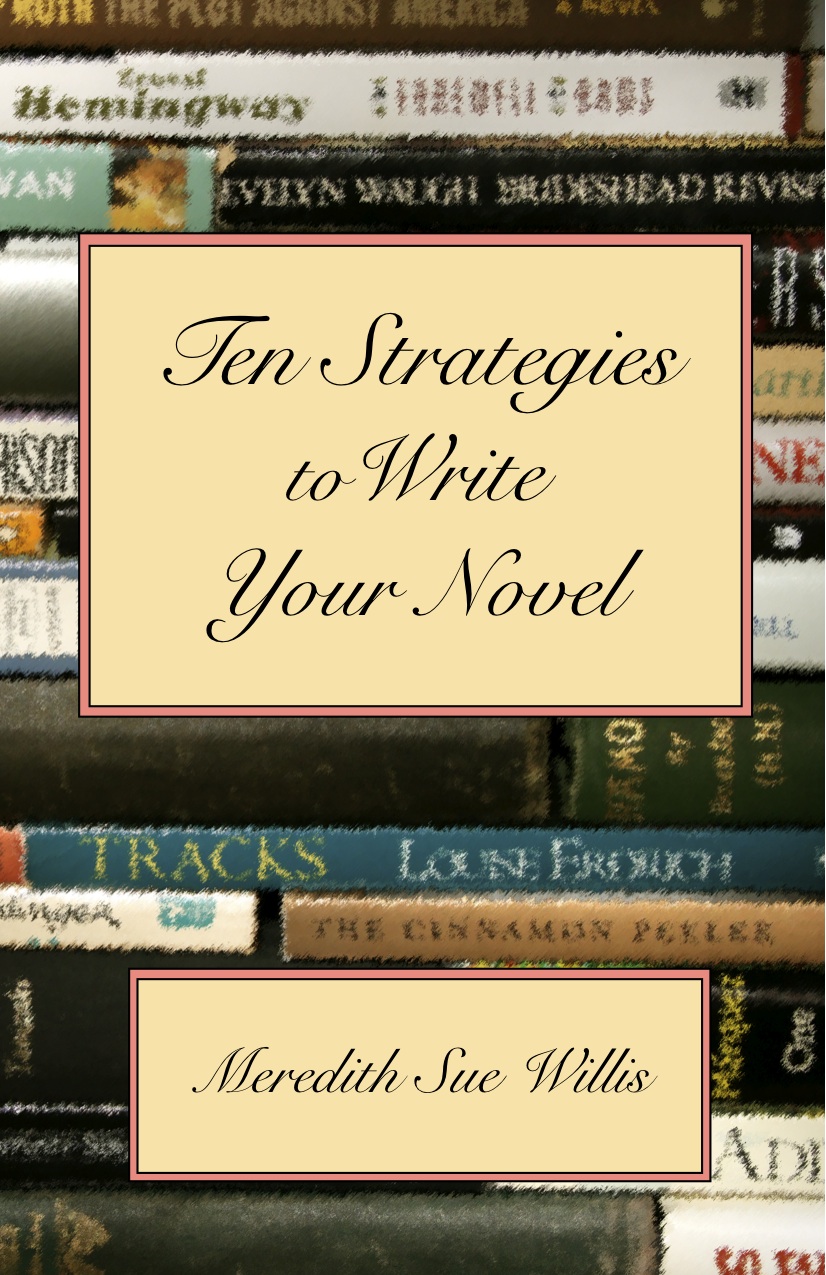

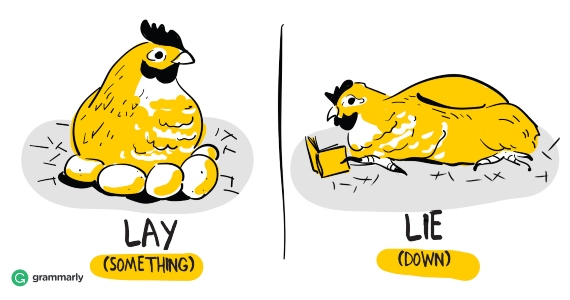
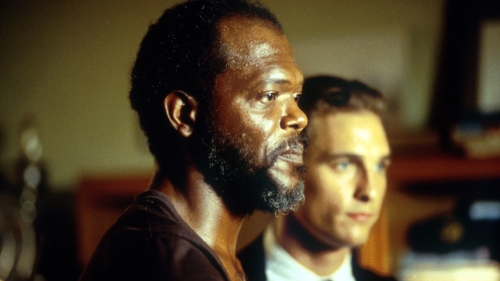
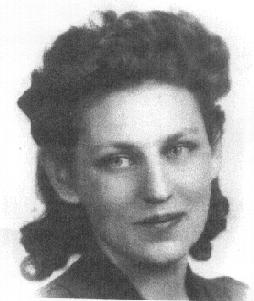
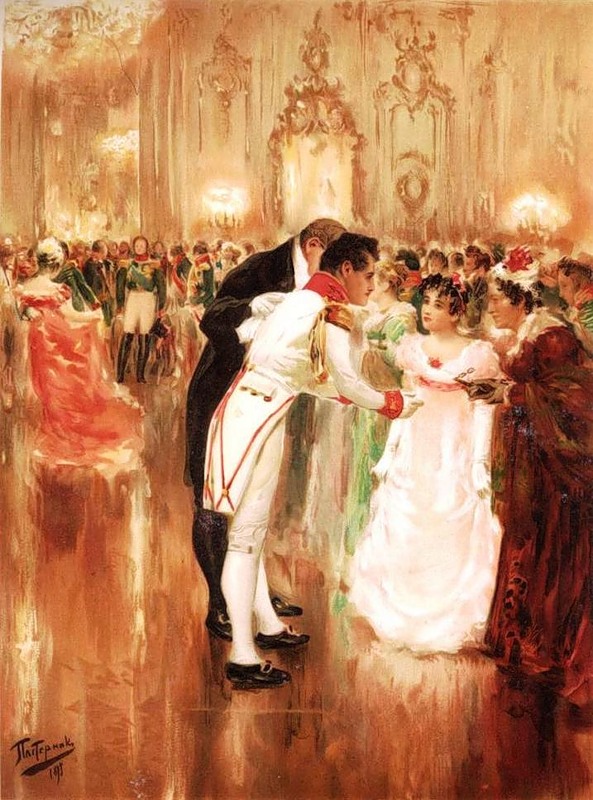

.jpg)
